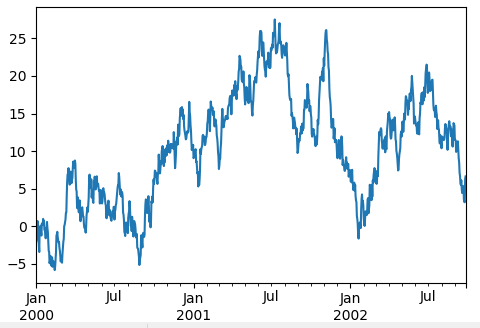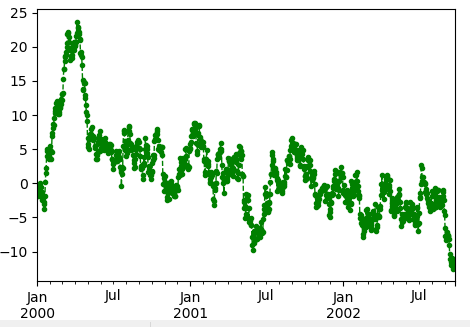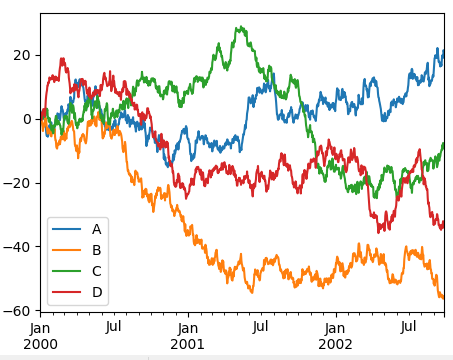import pandas as pd import numpy as np np.set_printoptions(threshold=np.inf) #生成一个二维数组,第一列为日期,第二列为正态分布值 ts = pd.Series(np.random.randn(1000),index=pd.date_range('1/1/2000', periods=1000)) #对值进行累加 ts = ts.cumsum() #展现变量的趋势变化二维线画图函数 #ts.plot() ts.plot(color='green', marker='.', linestyle='dashed', linewidth=1, markersize=6)
生成可视化的图片:
ts.plot() ts.plot(color='green', marker='.', linestyle='dashed', linewidth=1, markersize=6)


DataFrame 的 plot()
import pandas as pd import numpy as np np.set_printoptions(threshold=np.inf) import matplotlib.pyplot as plt #生成一个二维数组,第一列为日期,第二列为正态分布值 ts = pd.Series(np.random.randn(1000),index=pd.date_range('1/1/2000', periods=1000)) #对值进行累加 ts = ts.cumsum() #DataFrame 的 plot() df = pd.DataFrame(np.random.randn(1000, 4), index=ts.index,columns=['A', 'B', 'C', 'D']) print (df) #对值进行累加 df = df.cumsum() #展现变量的趋势变化二维线画图函数 plt.figure(figsize=(4,3),facecolor='blue'); df.plot();
生成的图:

扩展:
https://pandas.pydata.org/pandas-docs/stable/user_guide/visualization.html#visualization